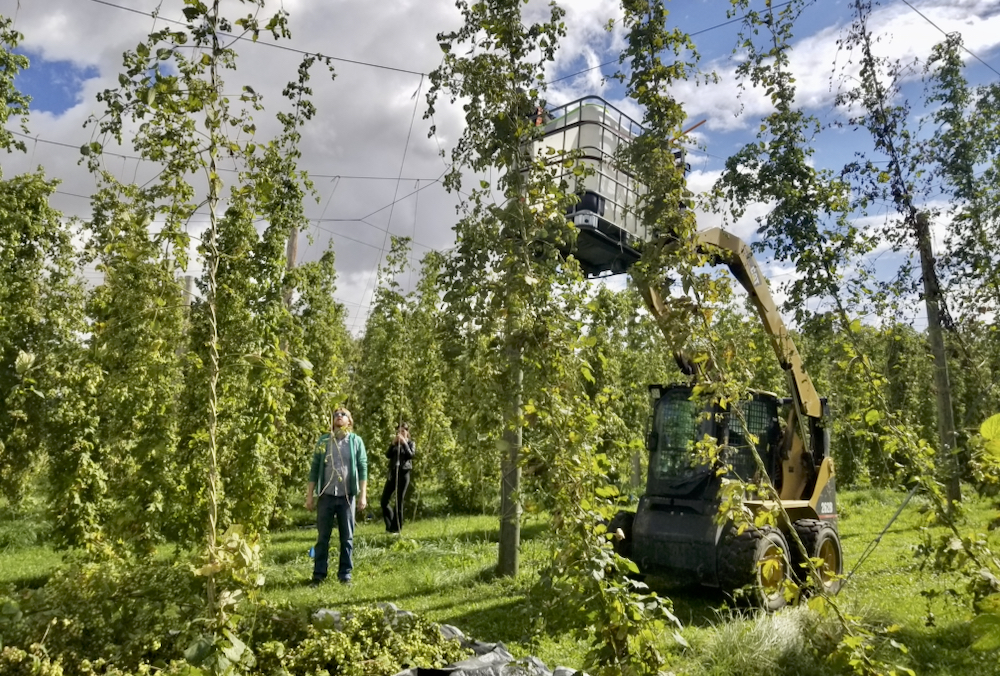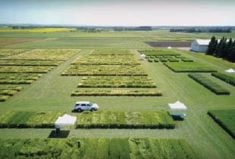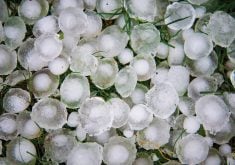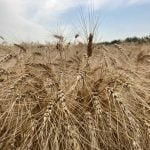It might not be the Yakima Valley — the hops capital of the world — but Alberta is no slouch when it comes to producing high-quality hops for the craft beer market.
“The markets are definitely getting more prominent for Alberta hops,” said Jenelle Bjarnason, who owns Hop To It with husband Shayne. “It’s still a new industry, so there’s still some hesitation for growers and brewers. But our hops are showing to be just as reliable as Yakima Valley (in Washington state) and just as high in quality.
“So we’re just getting the word out there that Alberta is growing hops, and they’re very, very good-quality hops.”
The Bjarnasons began growing hops on their 25-acre farm near Lacombe in 2018 after looking for a crop they could grow without much land or extra machinery. In 2019, they planted a half-acre on trellises fashioned from 18-foot-tall telephone poles, with another half-acre the year after.
“It doesn’t sound like much, but when they grow up to 18 feet every year, it’s more about volume than square footage,” said Bjarnason, a director with the Alberta Hop Producers’ Association.
“Every year, we cut them down, and every fall, they’re back up to the top again. They can grow a foot a day in the summer getting their way to the top. It’s a really interesting plant.”
But it’s also not for the faint of heart, she added.
VIDEO: From bine to divine: Watch below how hops are harvested
Hops are labour and input intensive, and for the first two years, produce next to nothing as they establish their deep taproots.
“Before we got into it, we knew they were definitely a long-term investment,” said Bjarnason, who is also an agronomist. “Hops aren’t a weekend crop. They’re a very needy crop, and you’re not going to get a return on them for seven to 10 years.
“They’re not an easy plant to grow by any means. They’re a ton of work — the very definition of a labour of love.”
Because hop plants take three to five years to reach full maturity, the couple got only about 10 to 20 per cent of production the first year and about 40 per cent the year after. But now in their third year, they’re starting to see the fruits of their labour, despite a hot, dry summer.
“We’re still learning what our plants can produce, but ultimately, we should be looking at 15,000 to 18,000 pounds a year,” she said.
Most will be used in the burgeoning local craft beer sector.
“It’s really cool to see — almost every little town has a brewery presence. It’s really great to be able to give them a more local option for their hops.”
Fresher ingredients, better product
Local is the “backbone of this whole craft beer movement,” said Matt Willerton, co-owner of Blindman Brewing in Lacombe.
“It’s a lot more fun to use what we have in our backyard,” he said. “It’s easy to go to a big hop producer in Yakima Valley — and we do, do a lot of that, don’t get me wrong — but it’s fun to challenge ourselves with the varieties that are growing in our climate.”
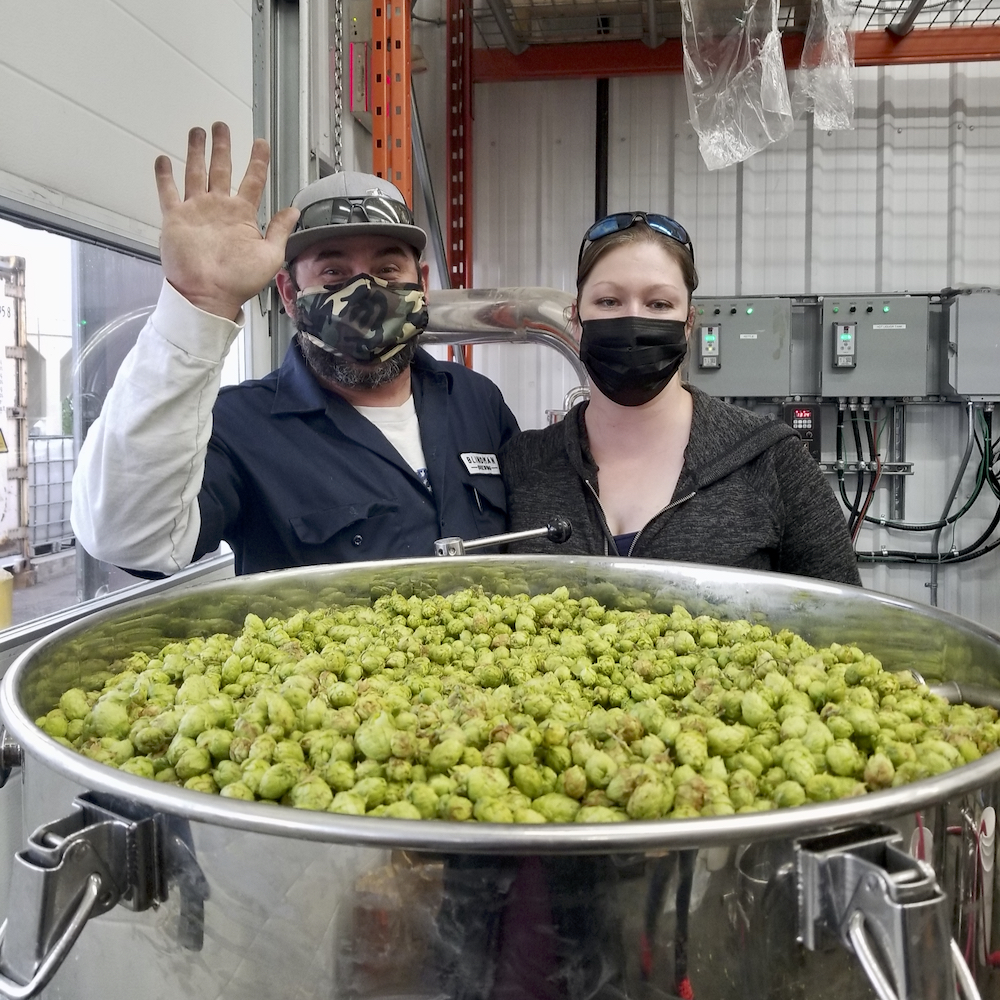
Brewers are notoriously picky, however, so there was some apprehension buying from a new hop producer, even if they were as local as it gets.
“We almost made them prove to us that they were going to be able to grow good hops when they first started,” said Willerton, who participated in last month’s harvest at Hop To It.
“They were excited and hopeful, but the crops weren’t there yet. Now they are, and the difference in the hops that we harvested this year compared to last year is huge.”
Small hop farmers are able to focus more on quality, said Bjarnason. The hops are hand-sorted to make sure only high-quality crops make it into the beer.
“You can hide a lot in a pellet, so if you can trust more where your hops are coming from and know the people putting them in, it makes a big difference,” she said.
And this year’s quality is high, partly because more mature plants produce more lupulin, the pollen that gives beer its hoppy taste and aroma. But it’s also because Alberta has “almost perfect conditions for hop growing.”
“We’re really excited for this season and this harvest,” said Bjarnason. “I think they’re going to make fantastic beer.”
Freshtival beer festival
Some of the hops harvested last month went straight into a fresh hop beer at Blindman Brewing for the upcoming ‘Freshtival’ in Red Deer County.
“Fresh hop beer is definitely a very seasonal thing — we pick the hops, we sort the hops, and the hops go into the beer usually that day,” said Bjarnason. “If you don’t get it in the beer, you’ve got to dry your hops right away, or they will go rotten. It’s a very time-sensitive procedure.”
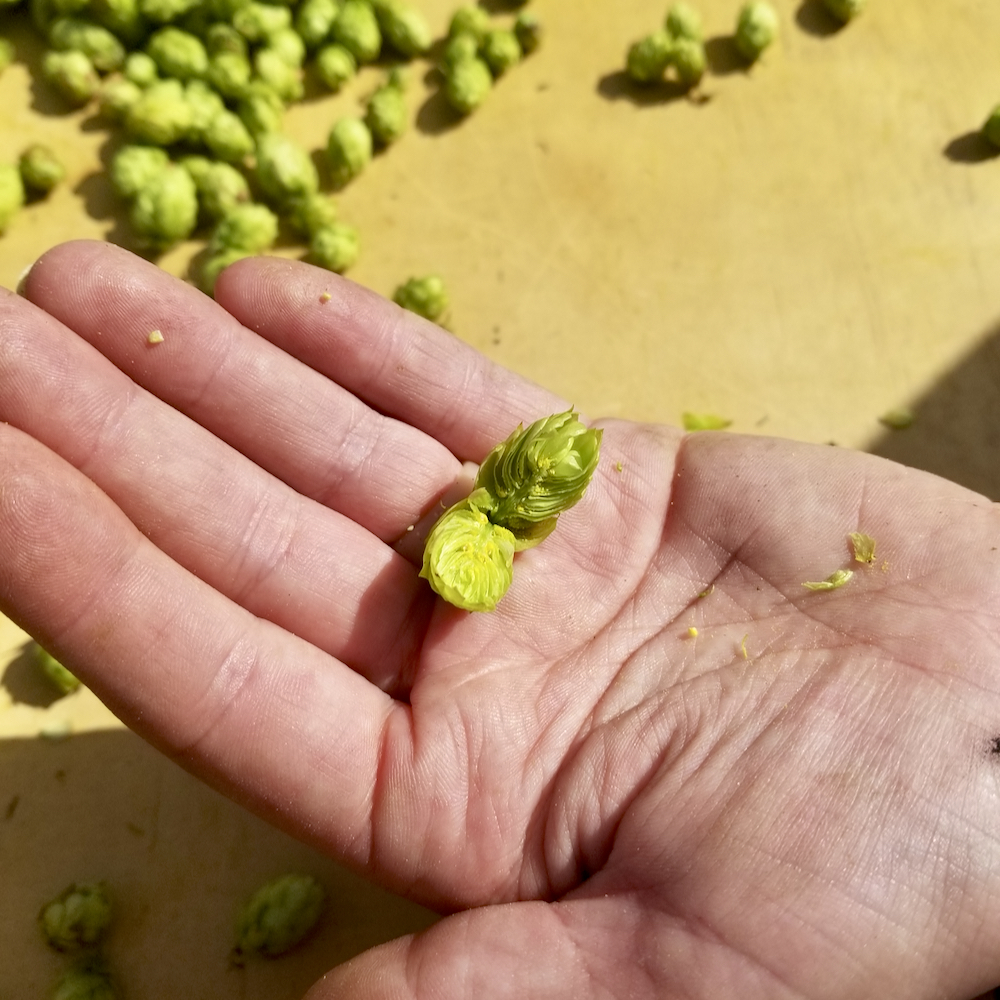
These fresh hop beers have a bit of a different flavour.
“It would be comparable to using fresh herbs as opposed to dry herbs. It just tastes fresher.”
Willerton agreed.
“Bringing it back as close to the roots as possible just makes a better product,” he said, adding even local dry hops offer a fresher taste than those sourced from elsewhere.
“We’ve found on the malt side that barley that’s malted fresh ends up having a fresher quality to the end product. We’re still in the early stages of that with the hops, but I imagine it will be very much the same thing.
“Our beer is best drank as fresh as possible, so for all the ingredients that go into it, the fresher the better.”
At least 15 craft breweries will be working with local hop growers to produce fresh hop beers for the Oct. 21-24 festival at Craft Beer Commonwealth near Red Deer.
Willerton hopes the event will give both hop growers and craft brewers an opportunity to showcase the high-quality products being produced locally.
“People just like to support local and be part of that community,” said Willerton.
“The story has been told over and over again about how lucky we are to be in Alberta with the high-quality barley we have, and it’s cool to be able to add hops to that story now as well.”

